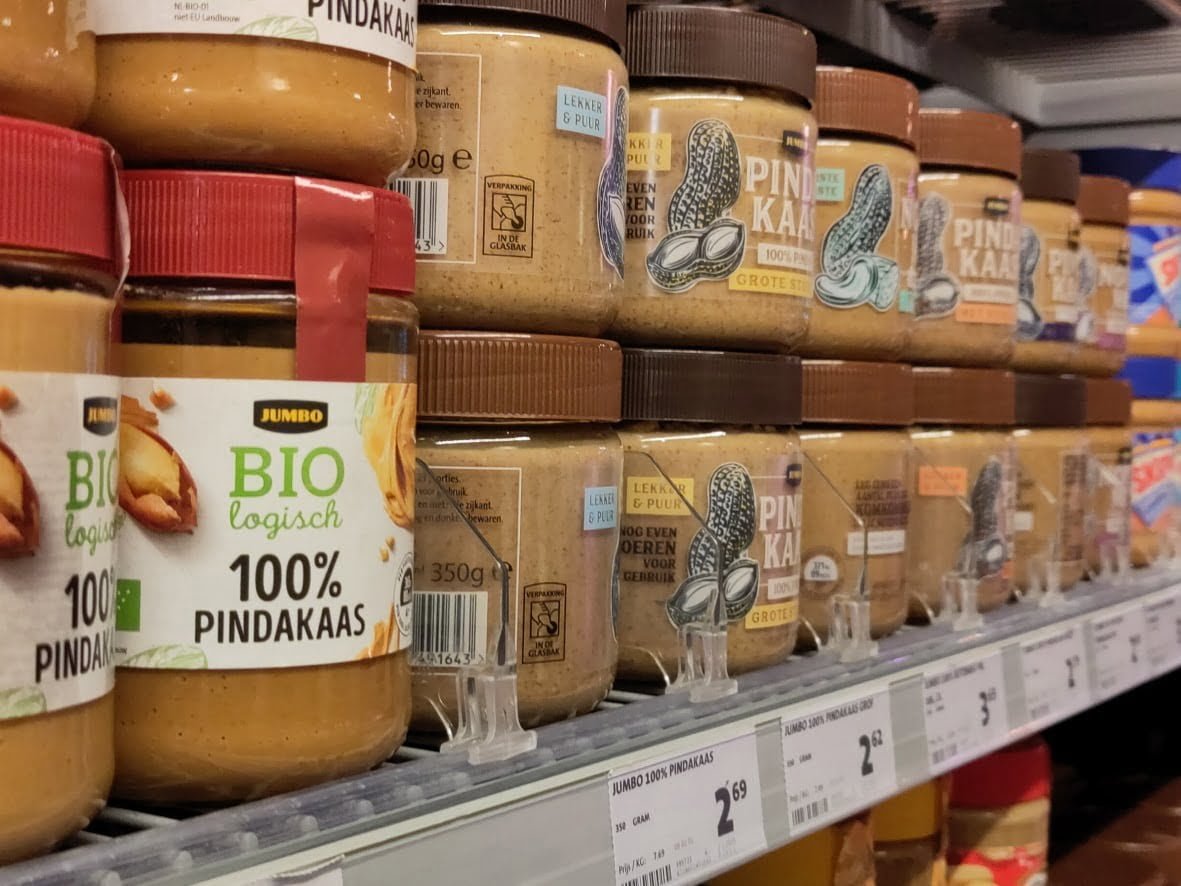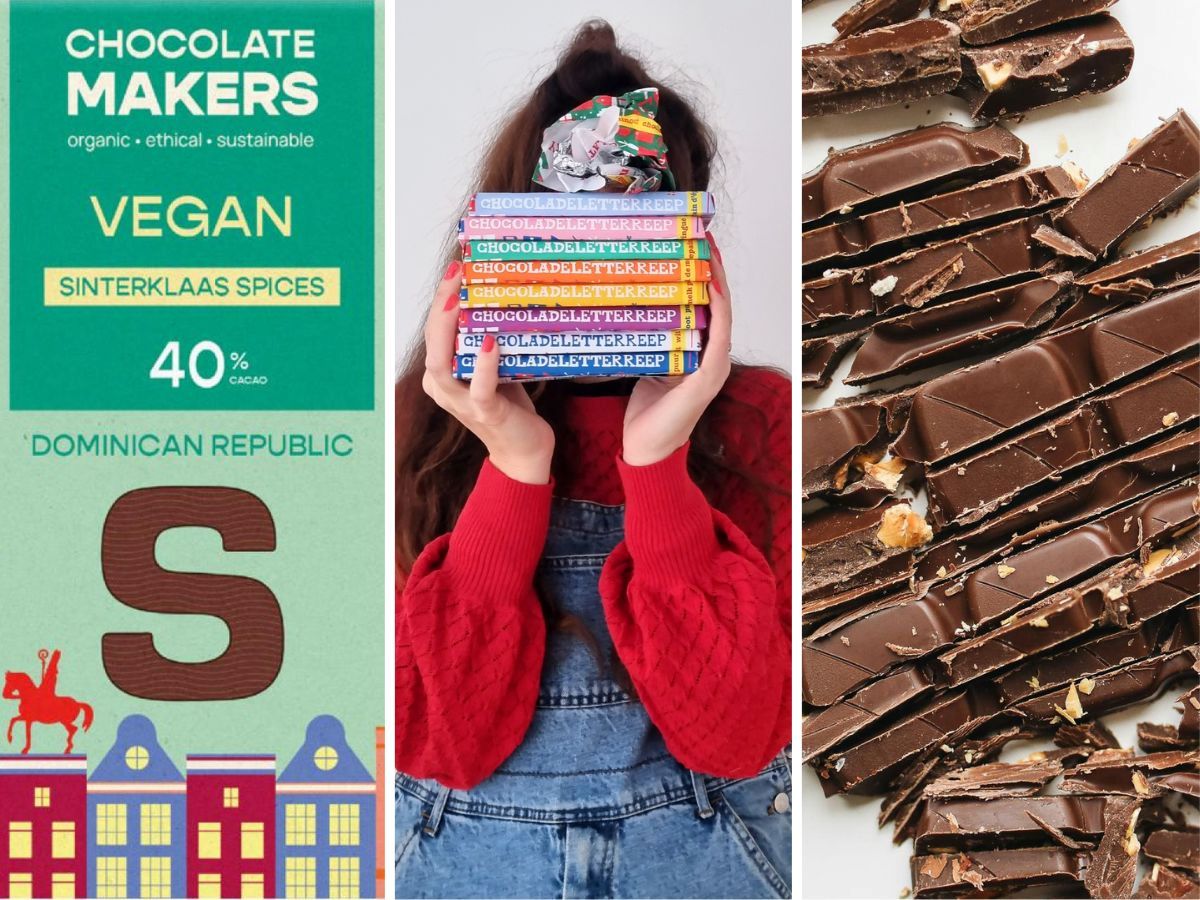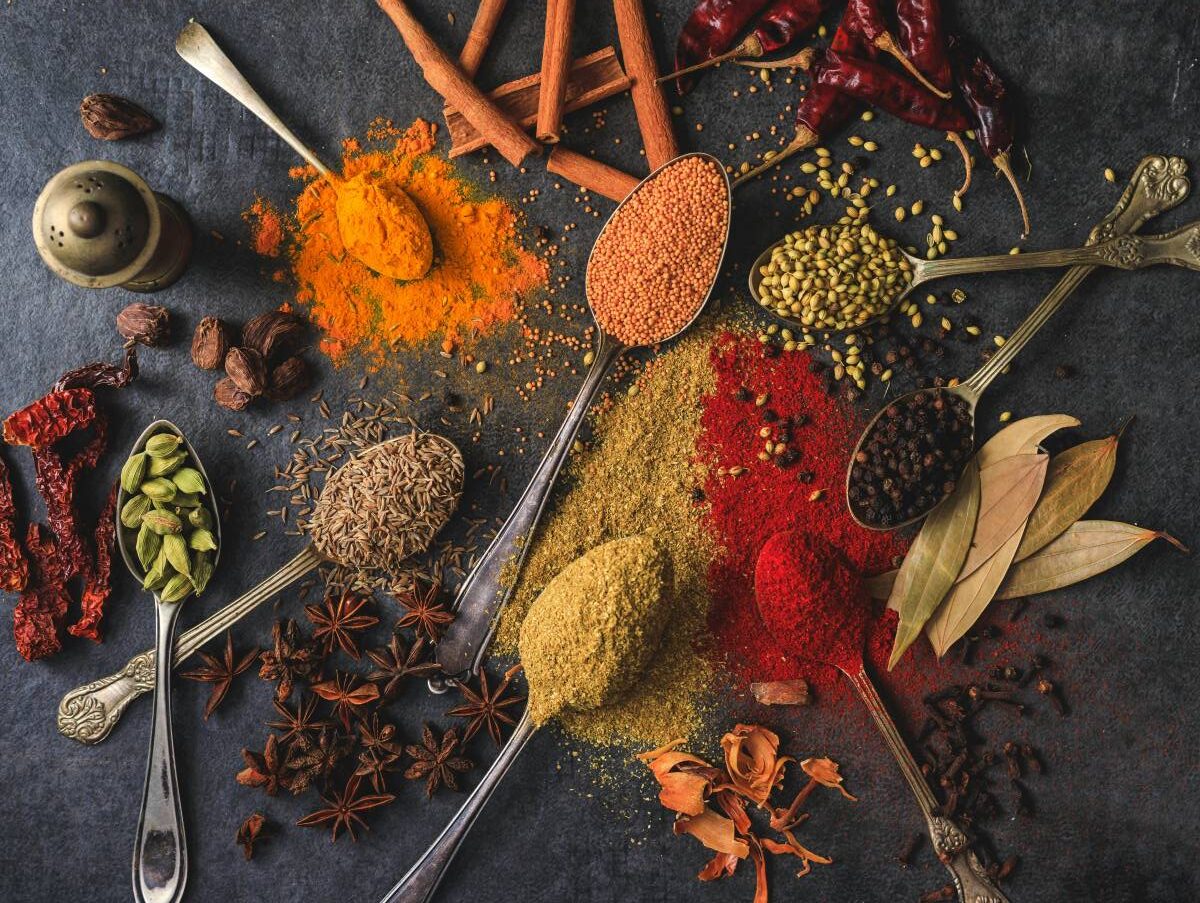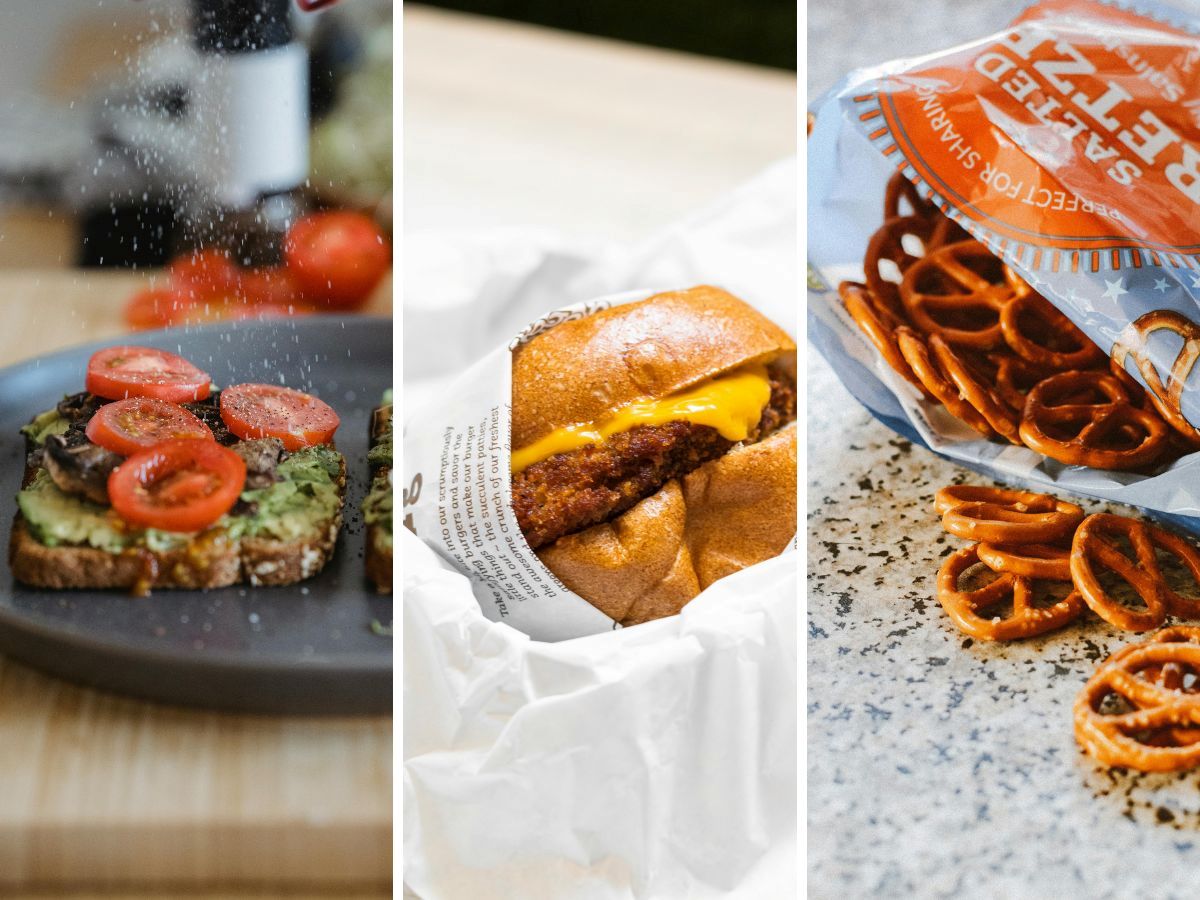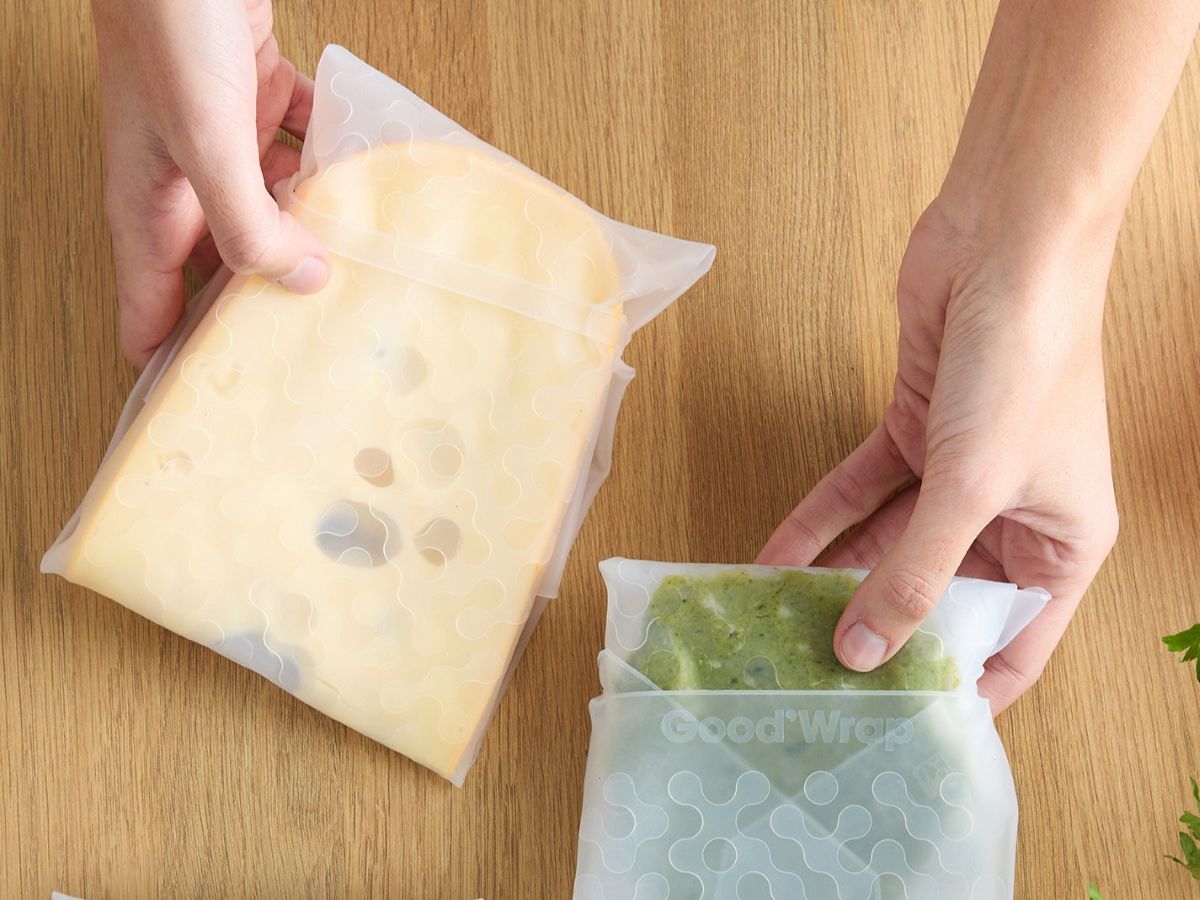There seems to be a label on every food package in the supermarket these days. More sustainable, healthier, fairer, better! But what's the real deal? And how do you make the best choice? We found out for you and list the top food labels.
Food labels?
Good labels can help you make a better, fairer and more environmentally conscious choice. You have several labels for pretty much every product group. There are labels for clothing, cosmetics, cleaning products, sustainable travel (check our article) and many more. And in the supermarket, too, you come across a lot of labels on food packaging. Because there are so many, it is not always immediately clear what a label stands for. And unfortunately, there is also a lot of deception; something looks like a sustainable label, but it is not. In fact, sometimes it is not even a recognised label.
What exactly is a seal of approval?
A quality mark is a logo or image on a product's packaging. It allows you to easily see whether a product meets the quality requirements of an independent and expert body. Thus, you should be able to see at a glance which product meets quality requirements on environment and sustainability, fair working conditions and trade, and animal welfare. But in the Netherlands, there are more than three hundred food quality marks. In addition, more and more (cooperating) companies are creating their own logo, similar to a hallmark. These are called company logos or umbrella logos. So these are not labels, but are very similar. To sum up: all these different initiatives do not necessarily make things easier.
Criticism of food labels
There is also criticism of (some) food labels. Opponents feel that labelling organisations are not doing enough and that even labelled products can be flawed. It is true that change happens slowly. The bodies behind labels themselves also admit that unfortunately they do not have influence on everything. Sometimes they are restricted by the laws and regulations of countries and regions. But then again, doing nothing at all won't get us very far either. Even if it's not all perfect, we should be happy with the good labels. They have influence and can make sustainability attractive and put pressure on companies and governments. Besides, those handy logos help us make choices in the supermarket. Even though maybe not everything is perfect yet, you can assume that the manufacturers behind the products with a good label are committed to improving our planet. And at least that's something!



In the supermarket it is quite difficult to find the better products, luckily there are 12 top labels to help us on our way.
Our favourite top food labels
And then you find yourself in the supermarket with all those three hundred labels. So what do you choose? Fortunately, Milieu Centraal has compiled a list of twelve top labels. You can find them at hallmark indicator.nl or you can download the handy free app. The top labels from this list set the strictest requirements in terms of sustainability, working conditions, trade and animal welfare. In addition, these labels are transparent in the requirements they meet and they provide easy-to-find information about them. The verification of the labels should also be reliable, says Milieu Centraal. In short, make sure you know these twelve, then you know you are choosing products that are proven to be better for people, the environment and animals.
We take you through them and tell you what we have learned about them so that you can make better sense of these pictures in the supermarket.
Organic food labels
There are three top organic food labels: EKO, European organic and Demeter. EKO and European organic stand for organic products. The requirements for the European organic label are laid down in European legislation. The EKO quality mark goes even further in terms of sustainability requirements. You can read more about the EKO label in this article. And so in addition, there is the Demeter label for products coming from biodynamic agriculture. Biodynamic agriculture sets even stricter rules for the use of pesticides, manure, feed and animal welfare. Organic products are subject to restrictions on the use of artificial fertilisers, pesticides and herbicides, a ban on the use of hormones and restrictions on the use of antibiotics. These requirements often make these products more sustainable than others. But not necessarily! Tricky though...
Not organic yet sustainable
For instance, organic cultivation often requires more land, is smaller-scale and therefore less efficient. So while organic is certainly better for nature and biodiversity, it says nothing about the CO2 impact. That may well be higher than for non-organic agriculture. Besides, certainly in the Netherlands and Europe, there are sustainable farmers who are not organic, but do produce in a very environmentally aware and efficient way with a low CO2 impact. Or how about farms that are almost, but just barely, organic. In short, organic is certainly a nice sustainable choice in the supermarket, but it is certainly not the only good choice. What we want to say is that it is all not so black and white.
Organic fruit and vegetables in plastic
To complicate things a little further: in most cases, organic products are also packaged in (plastic). This is because it is compulsory to make a clear distinction between non-organic and organic products. So that distinction is often made with the packaging. So don't be put off by that packaging, which only counts for a maximum of ten per cent of the product's impact. The real hit is the product itself and how it was produced. And often packaging also has a number of good qualities; it keeps food fresh for longer, preventing waste.
While we applaud the fact that more and more organic farmers are coming up with creative solutions to avoid plastic (take the pumpkins with an organic branding or courgettes and aubergines with a subtle organic band instead of in a big plastic bag), plastic-free grocery shopping is not always the best advice. Something in plastic may very well be a more sustainable choice than something unpackaged or wrapped in paper.
Hallmarks for meat and egg
At thegreenlist.nl we like to eat vegetarian and vegan, but occasionally we can still enjoy a good piece of meat, fish or dairy. When it comes to meat, fish, cheese and egg, you can also choose top labels. The Beter Leven hallmark was developed by the Dutch Society for the Protection of Animals to promote animal welfare in the meat, dairy and egg industries. If you choose 2 stars, you choose products with more requirements in terms of animal welfare. The requirements differ per animal species. With a Beter Leven 3-star quality mark, you choose products that meet the same animal welfare requirements as organic or similar products. You then choose meat or eggs that really pay more attention to animal welfare, which contributes to a better life for animals.
The Aquaculture Stewardship Council label can be found on fish, seafood and seaweed farmed with strict environmental and labour requirements. The Marine Stewardship Council see on caught fish and shellfish and it was established to tackle overfishing. The MSC label focuses on more sustainably caught fish and better working conditions. Both the ASC and MSC labels have no animal welfare requirements. Unfortunately, there is no top label available that puts fish and shellfish welfare first.
Sustainability and climate
Currently, there is only one label that focuses specifically on climate; the Climate Neutral Certified label. Creator Climate Neutral Group helps companies align their climate impact with the requirements of the Paris Agreement. That means producers with this label aim for net zero greenhouse gas emissions by 2050 to limit global warming to less than 2°C and preferably 1.5 degrees. The label has no or few requirements in other areas and we unfortunately still see little of it in the supermarket. We would like to see it on more products. The label On the way to PlanetProof is primarily a sustainability label with strict environmental and sustainability requirements. Animal welfare is also a focus, with requirements that go beyond common practice.


With the Fairtrade label, you know that the farmers behind your delicious piece of chocolate have had a better price.
Fairtrade
The Fairtrade label focuses on good working conditions, living wages, education, and fair trade in developing countries. And that is important because many farmers of cocoa, coffee or bananas, for example, do not receive a living wage for their products. Fairtrade guarantees that farmers get a minimum price for their products. This allows them to better support their families, send their children to school and invest in improving their farms. The environmental requirements for Fairtrade production and products are less stringent than those of other top labels. By buying Fairtrade products, you do contribute to fairer trade and prices. Read more about the Fairtrade label in this article.
Rainforest Alliance
The Rainforest Alliance label with the frog can be found on more and more products in the supermarket. You will find it on coffee, tea, chocolate and tropical fruits. The hallmark applies the highest environmental and good working conditions and trade requirements. Recently, the hallmark merged with UTZ to join forces. You can still find the UTZ logo on packaging, but you can assume that the same quality requirements apply.
Roundtable on Sustainable Palm Oil (RSPO)
The Roundtable on Sustainable Palm Oil (RSPO) label is about palm oil. You can therefore find it on a very wide range of products in the supermarket that contain palm oil. To be RPSO Certified, at least 95 per cent of the palm oil in a product must have been grown according to the sustainability requirements of the label and be traceable. Besides RSPO Certified, there are still variants: Mixed and Credits. These have different requirements. RSPO sets high requirements regarding the environment and working conditions. There is much to do about the use of palm oil in food. Tropical forests are felled to grow palm oil and environmental and working conditions are often not good. So opting for palm oil labelled products can make a difference. Because even though food containing palm oil may seem environmentally unfriendly, there are unfortunately no good alternatives to palm oil. Other oils have an even greater environmental impact if we were to grow them on such a large scale as palm oil. We sought it out for you before: palm oil - it's not as black and white as you think
Choosing certified palm oil is not complicated. In the Dutch food industry, 90% of palm oil used RSPO certified.
Sustainable Rice Platform
The latest top label is Sustainable Rice Platform. This label is about, you guessed it, rice. Environmental requirements must be met when growing the rice, such as a ban on deforestation, use of plant protection products and monitoring water use. There are also requirements on working conditions.
Food labels: this is what you need to know about them!
Did the label deluge make it hard to see what to choose from? Hopefully we have made it a little easier for you, because by choosing top labels, you are more likely to make a more sustainable, animal-friendly or fairer choice. Each label has its own products and its own areas of concern. On the label guide that I tipped off earlier, you can quickly see what a label stands for and what they check. Next time, check your own favourite products and see if you can switch to an alternative with a top quality mark. A label gives a guarantee that requirements are met in terms of animal welfare, sustainability and/or fair working conditions and trade. In the end, we can contribute to the change towards a better world with small steps.
All labels, company logos and umbrella logos can be found on the hallmark indicator.nl From Milieu Centraal.
More sustainable tips from thegreenlist.nl
- Want to know more about the impact of plastic packaging? Then read the truth about plastic packaging here.
- Looking for great places to do sustainable shopping? See where to go for sustainable shopping here.
- Looking for durable pans to cook in? Read here why PFAS-free pans are better for the environment and your health.
Sources: Food Centre: Is organic food more sustainable?, EOS Is 100% bio desirable?, Milieu Centraal: demand for organic grows slowly, Climate talks: Tomorrow starts now. Photo credits: main image peanut butter, chocolate and supermarket aisle: Mascha Bongenaar, jackfruit: thegreenlist.nl, cocoa fruit: Pixabay (Pexels).

